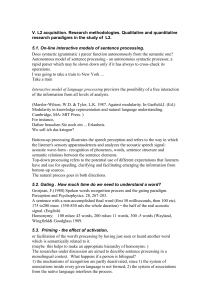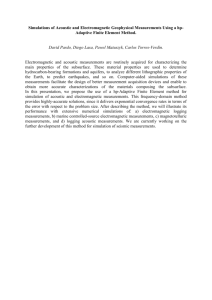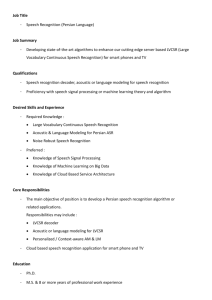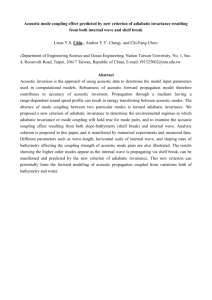Summary
advertisement
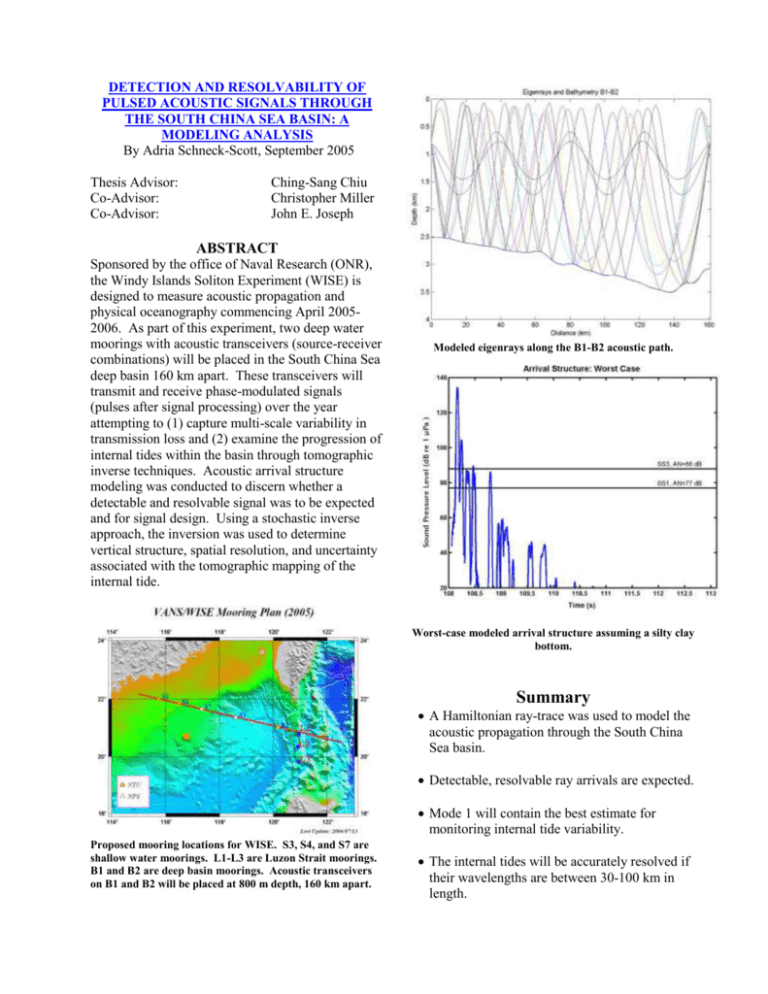
DETECTION AND RESOLVABILITY OF PULSED ACOUSTIC SIGNALS THROUGH THE SOUTH CHINA SEA BASIN: A MODELING ANALYSIS By Adria Schneck-Scott, September 2005 Thesis Advisor: Co-Advisor: Co-Advisor: Ching-Sang Chiu Christopher Miller John E. Joseph ABSTRACT Sponsored by the office of Naval Research (ONR), the Windy Islands Soliton Experiment (WISE) is designed to measure acoustic propagation and physical oceanography commencing April 20052006. As part of this experiment, two deep water moorings with acoustic transceivers (source-receiver combinations) will be placed in the South China Sea deep basin 160 km apart. These transceivers will transmit and receive phase-modulated signals (pulses after signal processing) over the year attempting to (1) capture multi-scale variability in transmission loss and (2) examine the progression of internal tides within the basin through tomographic inverse techniques. Acoustic arrival structure modeling was conducted to discern whether a detectable and resolvable signal was to be expected and for signal design. Using a stochastic inverse approach, the inversion was used to determine vertical structure, spatial resolution, and uncertainty associated with the tomographic mapping of the internal tide. Modeled eigenrays along the B1-B2 acoustic path. Worst-case modeled arrival structure assuming a silty clay bottom. Summary A Hamiltonian ray-trace was used to model the acoustic propagation through the South China Sea basin. Detectable, resolvable ray arrivals are expected. Mode 1 will contain the best estimate for monitoring internal tide variability. Proposed mooring locations for WISE. S3, S4, and S7 are shallow water moorings. L1-L3 are Luzon Strait moorings. B1 and B2 are deep basin moorings. Acoustic transceivers on B1 and B2 will be placed at 800 m depth, 160 km apart. The internal tides will be accurately resolved if their wavelengths are between 30-100 km in length.




